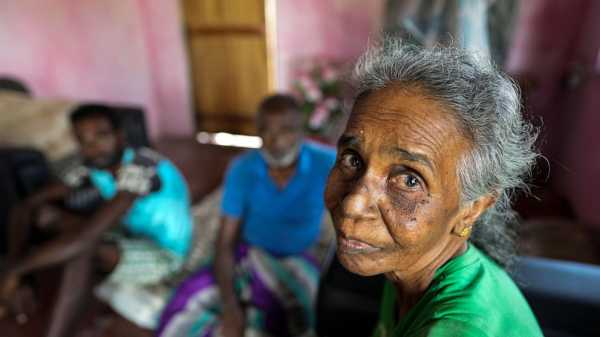
IRANAWILA, Sri Lanka — Ranjith Sunimal Fernando now has a shell of a home at the edge of Sri Lanka's coast, lost to the sea. Waves lap past the broken walls into damaged, empty rooms.
“One night last month, my son went to the bathroom and I suddenly heard him screaming, ‘our house has gone into the sea!’,” said Fernando, a 58-year-old fisher born and raised in Iranawila, about 80 kilometers (50 miles) north of the capital, Colombo.
“I saw parts of my house were already eaten up by the sea and my son coming out of the water, carrying our commode. Our home’s foundation was completely washed out and we were forced to shift further inland.”
He salvaged what he could from the wreck of what was once his home — wooden support beams, sections of roof and other building materials — to build another further inland. Others go out to the water to recover items they lost to the sea.
Much like the hundreds of other fishing hamlets that dot the coastline, the village of Iranawila suffers from coastal erosion. Cyclones, surging seas and flooding are taking away people’s homes and sometimes their livelihoods.
There is measly protection: sections of sea walls are already toppled by crashing waves.
Almost everyone in Iranawila are fishers. With increasing erosion from the encroaching sea, they have less space to anchor their boats. Fernando and others fishers in the village said they are unable to go fishing because of these problems.
Locals say increasing severe weather and the development of a sea reclamation project not far from Iranawila are the main reasons for the increased erosion that is leading to so much destruction. They say that the sea shore has moved in a few hundred meters (yards) in the last three years.
“I don’t know what will happen in the future but I still keep my faith,” said Nuwan Fernando, one of a few in Iranawila whose house, which is slightly elevated off the shoreline, remains intact. “There is a lot of work on big reclamation projects but no proper plan to protect people like us."
Tens of millions of people in South Asia, among the most densely populated region in the world, live along coastlines and are vulnerable to extreme weather events.
___
Associated Press climate and environmental coverage receives support from several private foundations. See more about AP’s climate initiative here. The AP is solely responsible for all content.
Sourse: abcnews.go.com






